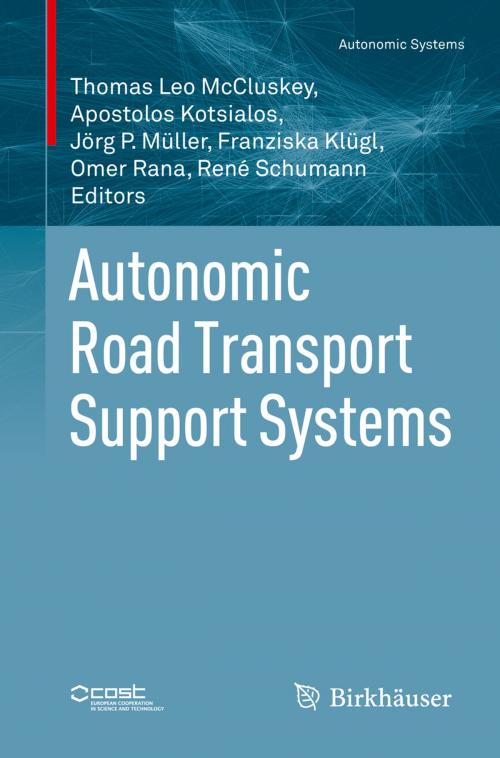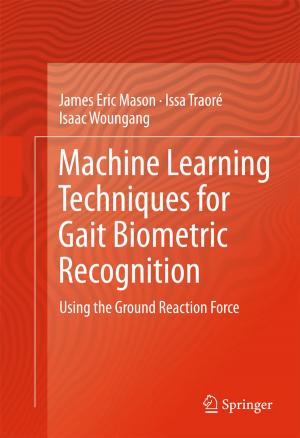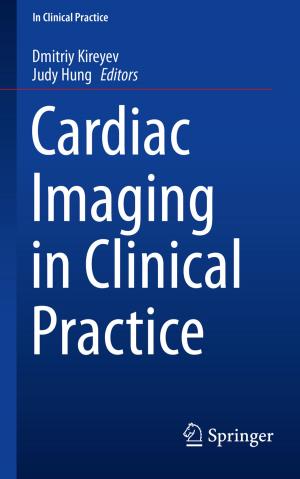Autonomic Road Transport Support Systems
Nonfiction, Computers, Advanced Computing, Artificial Intelligence, General Computing| Author: | ISBN: | 9783319258089 | |
| Publisher: | Springer International Publishing | Publication: | May 3, 2016 |
| Imprint: | Birkhäuser | Language: | English |
| Author: | |
| ISBN: | 9783319258089 |
| Publisher: | Springer International Publishing |
| Publication: | May 3, 2016 |
| Imprint: | Birkhäuser |
| Language: | English |
The work on Autonomic Road Transport Support (ARTS) presented here aims at meeting the challenge of engineering autonomic behavior in Intelligent Transportation Systems (ITS) by fusing research from the disciplines of traffic engineering and autonomic computing. Ideas and techniques from leading edge artificial intelligence research have been adapted for ITS over the last 30 years. Examples include adaptive control embedded in real time traffic control systems, heuristic algorithms (e.g. in SAT-NAV systems), image processing and computer vision (e.g. in automated surveillance interpretation). Autonomic computing which is inspired from the biological example of the body’s autonomic nervous system is a more recent development. It allows for a more efficient management of heterogeneous distributed computing systems. In the area of computing, autonomic systems are endowed with a number of properties that are generally referred to as self-X properties, including self-configuration, self-healing, self-optimization, self-protection and more generally self-management. Some isolated examples of autonomic properties such as self-adaptation have found their way into ITS technology and have already proved beneficial. This edited volume provides a comprehensive introduction to Autonomic Road Transport Support (ARTS) and describes the development of ARTS systems. It starts out with the visions, opportunities and challenges, then presents the foundations of ARTS and the platforms and methods used and it closes with experiences from real-world applications and prototypes of emerging applications. This makes it suitable for researchers and practitioners in the fields of autonomic computing, traffic and transport management and engineering, AI, and software engineering. Graduate students will benefit from state-of-the-art description, the study of novel methods and the case studies provided.
The work on Autonomic Road Transport Support (ARTS) presented here aims at meeting the challenge of engineering autonomic behavior in Intelligent Transportation Systems (ITS) by fusing research from the disciplines of traffic engineering and autonomic computing. Ideas and techniques from leading edge artificial intelligence research have been adapted for ITS over the last 30 years. Examples include adaptive control embedded in real time traffic control systems, heuristic algorithms (e.g. in SAT-NAV systems), image processing and computer vision (e.g. in automated surveillance interpretation). Autonomic computing which is inspired from the biological example of the body’s autonomic nervous system is a more recent development. It allows for a more efficient management of heterogeneous distributed computing systems. In the area of computing, autonomic systems are endowed with a number of properties that are generally referred to as self-X properties, including self-configuration, self-healing, self-optimization, self-protection and more generally self-management. Some isolated examples of autonomic properties such as self-adaptation have found their way into ITS technology and have already proved beneficial. This edited volume provides a comprehensive introduction to Autonomic Road Transport Support (ARTS) and describes the development of ARTS systems. It starts out with the visions, opportunities and challenges, then presents the foundations of ARTS and the platforms and methods used and it closes with experiences from real-world applications and prototypes of emerging applications. This makes it suitable for researchers and practitioners in the fields of autonomic computing, traffic and transport management and engineering, AI, and software engineering. Graduate students will benefit from state-of-the-art description, the study of novel methods and the case studies provided.















